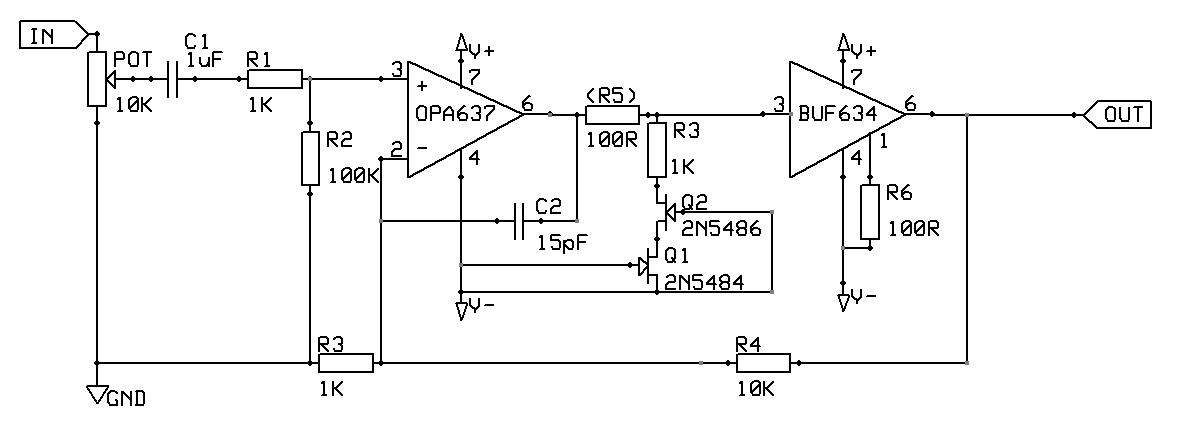PJPro
100+ Head-Fier
- Joined
- Apr 24, 2009
- Posts
- 155
- Likes
- 10
Quote:
OK. I'll tweak the values.
Quote:
Need to return to this later methinks.
Quote:
OK. Thanks.
Quote:
I'll place it on the schematic as optional.
Quote:
Agreed. I'm intending 3 channel. Thought it best to get a L/R basically right first.
Quote:
I didn't realise that the Pimeta used an IC buffer. Having looked, the Pv1 actually uses the BUF634! However, I'd still like to press on as one of my intending learning objectives from this exercise will/may be the production of a PCB (I've never done one before).
| Originally Posted by diditmyself /img/forum/go_quote.gif 1. I think the gain is far to high. You'll have problem adjusting the volume and the amp will be noisy. |
OK. I'll tweak the values.
Quote:
| Originally Posted by diditmyself /img/forum/go_quote.gif 2. If your source doesn't have DC on it's output (it's probably already capacitor coupled) you dont need the C1 cap. I think an input resistor will do more good. |
Need to return to this later methinks.
Quote:
| Originally Posted by diditmyself /img/forum/go_quote.gif 3. If you're using a 50k pot, the R1 resistor should be something like 470k to 1M. |
OK. Thanks.
Quote:
| Originally Posted by diditmyself /img/forum/go_quote.gif 4. A resistor between opamp and buffer might increase the stability. Use something like 47R to 100R. |
I'll place it on the schematic as optional.
Quote:
| Originally Posted by diditmyself /img/forum/go_quote.gif 5. How the return currents are handled is as important as L/R channels. 3-channel topology, IC-regulators, large and good capacitors - the choice is yours, but make it good. I know what I like but I'm not going to start a war in this thread. |
Agreed. I'm intending 3 channel. Thought it best to get a L/R basically right first.
Quote:
| Originally Posted by diditmyself /img/forum/go_quote.gif 6. Why not use a PIMETA v2 board? Room for fancy capacitors? With a DC-coupled 3 ch amp, who cares about capacitors! |
I didn't realise that the Pimeta used an IC buffer. Having looked, the Pv1 actually uses the BUF634! However, I'd still like to press on as one of my intending learning objectives from this exercise will/may be the production of a PCB (I've never done one before).









